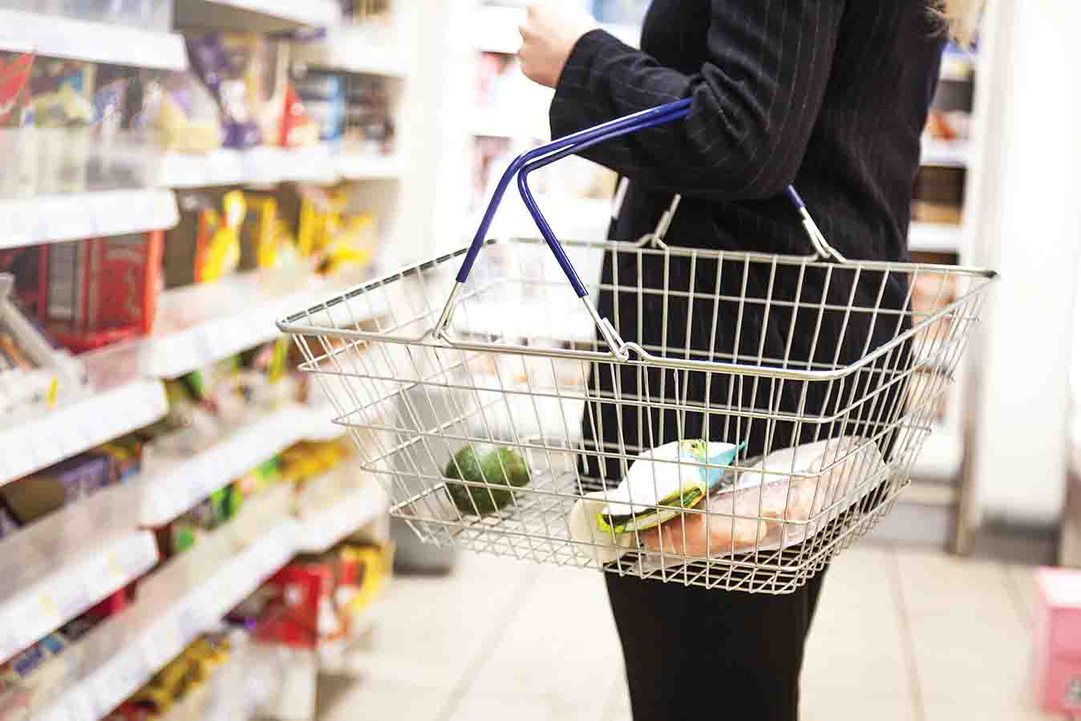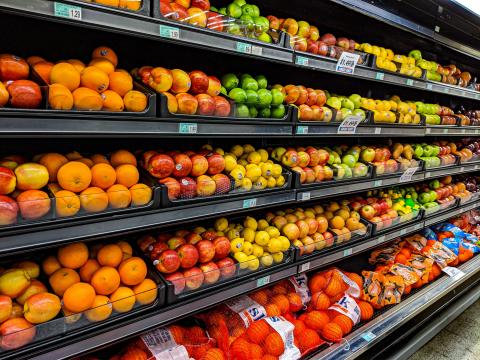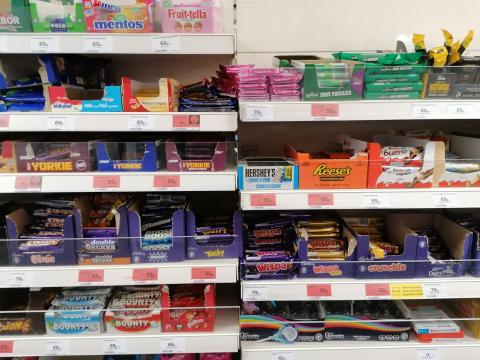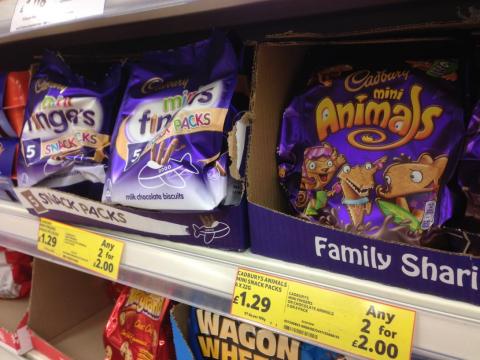
Kids Food Guarantee Update: Multibuys - July 2023
One third of BOGOF and multibuy deals are on unhealthy food, with just 3% on staple carbs and 3.8% on fruit and veg
The Kid’s Food Guarantee
The Kids Food Guarantee is a set of actions which we think supermarkets should have in place as a minimum if we are to effectively tackle rising levels of food insecurity. These are actions that citizens have told us they are eager to see, and which align with existing areas of focus for food retailers.
Why multibuys?
Multibuy deals, such as ‘buy one get one free’ (BOGOFF) or 3-for-2 deals, are promotions on food and drink items that allow a greater volume of the item in question to be purchased for a set price.
Evidence suggests that while promotions make products cheaper they also tend to encourage people to buy more of the promoted category than expected. On average multibuy offers increase the amount purchased by 22%.
In July 2020 the government announced that it would legislate to end promotion of HFSS products by volume and location both online and in store in England.
However, although the limits on the location of HFSS products came into force in October 2022, the government recently announced it would be postponing the implementation of the restrictions on HFSS multibuy promotions until 2025.
What did we do?
To monitor this Guarantee area we worked with Questionmark Foundation, an international non-profit think tank, to look at what type of foods are included as part of multibuy promotions. Data was collected for the period 18th to 24th April 2023.
We looked at food promotions available across the five largest UK retailers; Aldi, ASDA, Morrisons, Sainsbury’s and Tesco. Promotions were all volume promotions, for example “buy one get one free” (BOGOFF) deals where customers benefit if more than one item (of the same) product is bought.
We looked at whether such offers were on High Fat, Salt, Sugar (HFSS) foods, staple carbohydrate products, and other healthy essentials such as fruit and veg.
Staple carbohydrate foods were defined as plain carbohydrates in their simplest form, including rice, pasta, grains, potatoes, lentils, beans (including dried and tinned), and loaves of bread (excluding rolls and pitta breads etc).
The Government’s Eatwell Guide recommends that 38% of our diets consist of starchy carbohydrates such as bread and rice, 40% from fruit and veg, and 12% from beans, pulses and other animal protein.

HFSS foods are recommended only to be consumed infrequently and in small amounts. For children aged under four, it is recommended that 50% of their daily energy intake come from carbohydrate.
Vitamins, medicines, and other non-food products were excluded. Alcohol was included in analysis looking broadly at the type of deals currently offered in the UK, but excluded where we looked at the types of foods on offer and how healthy or unhealthy they are. Non-alcoholic drinks were included in the nutrition profiling analysis.
We used the Government’s Nutrition Profiling Model to assess the healthiness of offers. Using this criteria foods scoring 4 or more points, and drinks scoring 1 or more points, are classified as high in sugar, salt and/or fat (HFSS).
This model uses a broader definition of HFSS compared to the government’s definition of foods within scope for the restriction of location based and volume promotion of HFSS foods.
We will be running the same analysis again at regular intervals to assess where progress is being made. For further details on the methodology used in the Kid’s Food Guarantee and our inclusion and exclusion criteria, read our technical report.
What does good look like?
Ideally promotions - where offered - would be on staple foods that contribute to a healthy diet, rather than discretionary foods that we ought to be eating less of. For example, promotions could support families to buy staple carbohydrates such as bread and rice, as well as fruit and veg, milk and eggs.
When we surveyed citizens in January, 87% said they’d like to see retailers putting offers and promotions on staple foods like bread and milk. This was the most popular of all the suggested actions citizens were surveyed on.
What type of products are typically on offer?
We found that when alcohol was included, one in four promotions (25%) was on alcohol, a very large percentage given that UK recommendations are to drink in moderation with there being no definitively safe lower limit. In England, alcohol is the leading cause of ill-health, disability, and death for those aged 15 to 49 years.
When alcohol was excluded from our analysis of the products on offer, we found that almost a third (29%) of offers are on HFSS products compared to just 3% on staple carbohydrates (i).
Further analysis of those foods categorised as non HFSS found that just 3.8% of offers are on fruit and vegetables (2.6% on fruit and only 1.2% for vegetables).
Less than 1% of offers (0.4%) were on milk. Just one promotion was found on eggs – a packaged snacking option rather than a carton of eggs intended for everyday use.
The non-HFSS category included a wide range of foods including marinades, sauces, spices and herbs, kitchen ingredients and composite foods such as ready meals, as well as some healthier essentials such as fruit and veg. 11.5% of offers were on non-alcoholic drinks such as soft drinks, juices and smoothies with variable nutrition profiles.
Almost two thirds of offers were on branded goods; 62% of offers compared to 38% for own brand or own label products.
There is therefore a need for manufacturers and retailers to work together during the buying process to ensure that those branded products on offer are healthier, something that would also support retailers to meet their own sales-based targets for healthier foods.
Do the types of products on offer vary across retailers?
Of the three retailers we analysed who offer multibuy deals, Tesco offer the smallest proportion of unhealthy (HFSS) items on promotion. 6.2% of Tesco’s offers are on HFSS products, as defined by the NPM model, just under half the amount that Morrisons and ASDA offer.
However, Morrisons offer the highest proportion of offers on staple carbohydrates (2.3%) and on non-HFSS foods.
There is therefore a real opportunity for all retailers offering multibuy deals to increase the proportion of offers available on staple carbohydrates and on fruit and vegetables in line with consumer demand.
Implications for policy makers
In the midst of current cost of living crisis, the government and retailers understandably want to offer the best value to households, but now more than ever it is vital for families to be able to afford nutritious food.
The higher price of healthier calories relative to less healthy calories means that is already more challenging for citizens struggling with the cost of living to afford a healthy diet, especially those from low income groups.
Offering promotions could be a useful tool for supporting consumers to stretch their food budget further when promotions are on essential items.
But unless such promotions are structured so that they help citizens to afford healthier staple foods - rather than discretionary foods high in salt, sugar and fat that we should be eating less of - multibuy offers will only further obstruct the shift towards making healthier diets the easier, more affordable default option that we urgently need.
What we want to see
Retailers offering multibuy deals on staple carbohydrates and healthy essentials like fruit and vegetables, milk and eggs rather than on less healthy, HFSS foods.
Sainsbury’s and Tesco demonstrated commendable responsible business leadership in committing to ban promotions on HFSS foods despite the government rolling back the planned implementation of this policy to October 2025.
Other retailers should follow suit if they are serious about supporting the improved health of the nation.
We would urge the government to reconsider their delay of the planned ban on HFSS promotions. It will not be possible for the government to meet their goal of halving childhood obesity by 2030 unless urgent action is taken to rebalance the food environment.
What next?
We will be rerunning this analysis on a regular basis to see whether supermarkets are making any changes in the foods on offer as part of promotions. The next analysis will look at price promotions as well as revisiting multibuy deals.
_______________________________________
(i) The category ‘Other’ includes those products where nutrient information is missing online, which makes it difficult to calculate an (accurate) NPM score and determine whether the product is HFSS or not. The non HFSS category includes a wide range of foods with an NPM score of less than 4, including tea and coffee, herbs and spices, composite foods, as well as fruit, veg and milk





